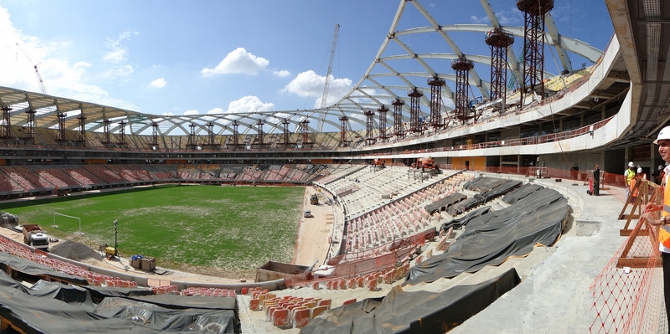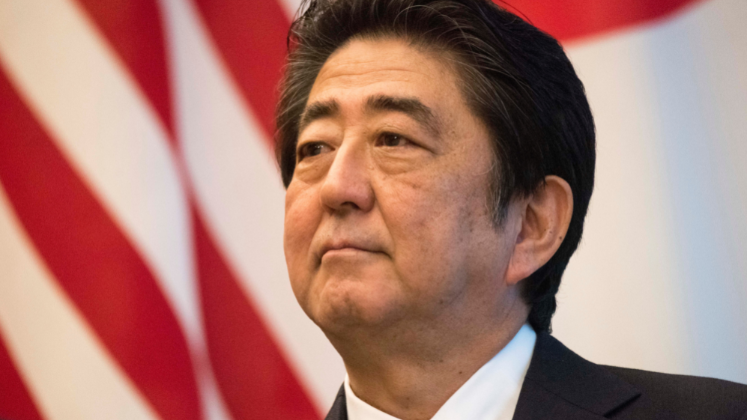 Later this year, Brazil will host one of the world’s largest sporting events, the 2014 football World Cup. Andrew Richards highlights the problem of poor working conditions in the construction of stadia for the event, a problem that it is in no way confined to Brazil. He argues that countries with large numbers of workplace deaths tend to also be notable for their repression of trade unions.
Later this year, Brazil will host one of the world’s largest sporting events, the 2014 football World Cup. Andrew Richards highlights the problem of poor working conditions in the construction of stadia for the event, a problem that it is in no way confined to Brazil. He argues that countries with large numbers of workplace deaths tend to also be notable for their repression of trade unions.
On 7th February 2014, Antônio José Pita Martins was killed at work. Aged 55, he became the third construction worker to die building the football stadium in Manaus, Brazil, in addition to another three already killed in stadia under construction in Sao Paulo and Brasilia for the June 2014 World Cup. However, these deplorable statistics pale in comparison to those of Qatar, site of the 2022 tournament. On 24th January 2014, The Guardian reported that 185 Nepalese construction workers died in 2013 alone as a result of the appalling working conditions, akin to outright slavery, underpinning Qatar’s own preparations. The International Trade Union Confederation (ITUC) has painted an even more horrendous picture. Given Qatar’s reported need for between half and one million additional workers from Nepal, India and other South Asian and African countries to complete its preparations for 2022, the ITUC has warned that at current fatality rates, more than 4,000 workers risk losing their lives “before a ball is kicked at the 2022 World Cup”.
Preparations for the world’s premier sporting event obviously generate publicity, and it is to the credit of progressive elements in the media and of organizations such as the ITUC and Amnesty International that they are highlighting the suffering entailed. Yet this suffering represents the tip of a huge iceberg when compared to the deplorable working conditions and fatalities endured by millions of workers across the globe, especially in developing countries. In September 2005, the International Labor Office (ILO) reported that approximately 2.2 million people die of work-related accidents and diseases every year, but added that this is probably a huge underestimation due to poor reporting and coverage systems in many developing countries. For example, in 2005 India reported a mere 222 fatal accidents in the workplace, while the Czech Republic, with a working population approximately 1% of that of India, reported 231. The ILO therefore estimated the true number of fatal accidents in India at a staggering 40,000. Such high fatalities are a function of the weak or nonexistent protections existing for many workers in most developing countries. Certain economic activities present in both industrialized and developing countries, such as mining and construction, are inherently dangerous, yet fatality rates in these sectors are far higher for workers in the developing world.

Meanwhile, other sectors have become heavily concentrated in the developing world – for example, textile production in South and South-East Asia – and are notorious for their brutal and dangerous workplace regimes, excessive working hours, low pay and the use of child labour. In Bangladesh, for example, the garment industry is worth US $ 20 billion per year, employs 4 million workers and accounts for 80% of the country’s exports. Yet the 1,129 workers who died when the Rana Plaza factory collapsed on top of them on 24th April 2013, earned US $ 38.50 a month.
Such sectors are also notable for their repression of trade unions. While the latter are routinely derided and denounced by the Right as antiquated institutions that obstruct the workings of the global capitalist economy, they are, ultimately, the only real guarantors of workers’ economic and physical wellbeing. Precisely for this reason, trade unions and union activists are repressed and persecuted in much of the developing world by both multinational and national companies, often in collusion with governments desperate to attract foreign investment via the presence of ample supplies of cheap labour. Since 2006, the ITUC has monitored the global violation of trade union rights. While the power of unions in the industrialized countries has generally declined in recent decades, this is as nothing compared to the desperate plight of union leaders and members in much of the developing world. For example, 18 trade unionists were murdered in Colombia in 2012; 21 Cambodian workers remain in jail for participating in strikes in January 2014; 91 members of the Turkish trade union KESK were in detention in June 2013. In terms of overall repression, Guatemala, notorious for its ferocious labour regimes in the production of bananas and other fruits, “has become the most dangerous country in the world for trade unionists”. Since 2007, at least 53 union leaders and representatives have been killed, in addition to innumerable acts of attempted murder, torture, kidnappings and death threats suffered by others. One of the country’s latest victims, Marlon Dagoberto Vásquez López, an activist and member of the Sindicato Nacional de Trabajadores de la Construcción y Servicios de Guatelama, was a mere nineteen years of age.
Back in Manaus, meanwhile, Brazil’s Minister of Sport offered his condolences to the family of Antônio José Pita Martins. Yet with proper protection in a workplace whose inherent dangers have been exacerbated, as elsewhere, by the vast commercial interests at stake, he would have lived to enjoy the fruits of his labour.
Please read our comments policy before commenting.
Note: This article gives the views of the authors, and not the position of USApp– American Politics and Policy, nor of the London School of Economics.
Shortened URL for this post: http://bit.ly/1gfkcSV
_________________________________
 Andrew Richards –Carlos III-Juan March Institute
Andrew Richards –Carlos III-Juan March Institute
Andrew Richards is at the Center for Advanced Study in the Social Sciences (CEACS) of the Juan March Institute in Madrid. He has been a Visiting Professor at the Department of Government, Dartmouth College, and the Institute of Political Studies at the University of Heidelberg, teaching courses on Comparative and European Politics, and a Visiting Scholar at the Wissenschaftszentrum, Berlin.







